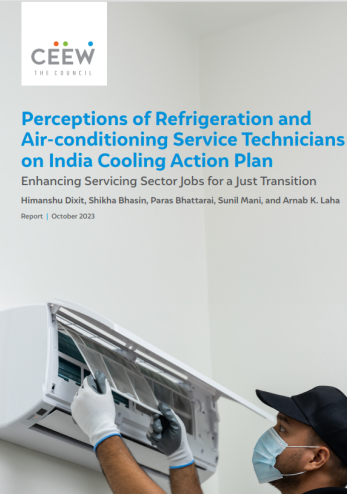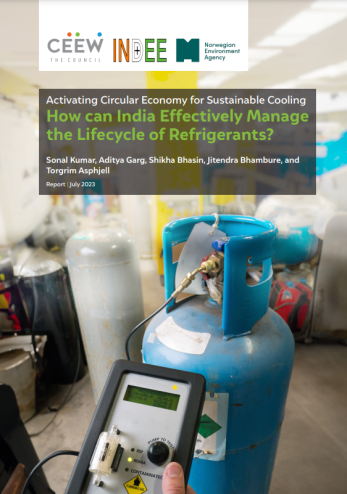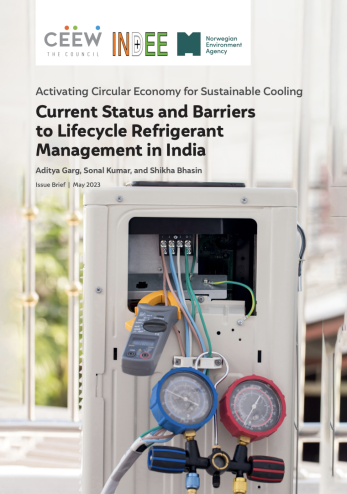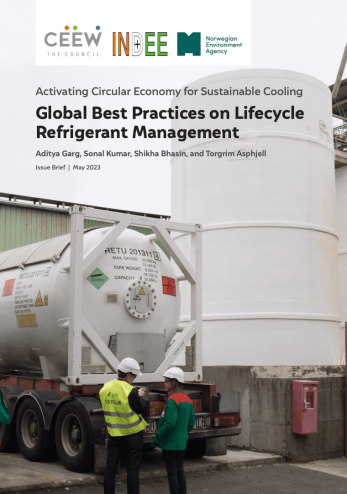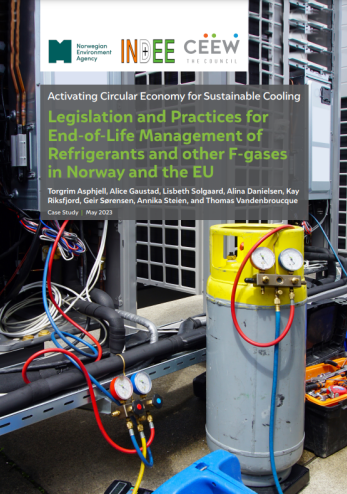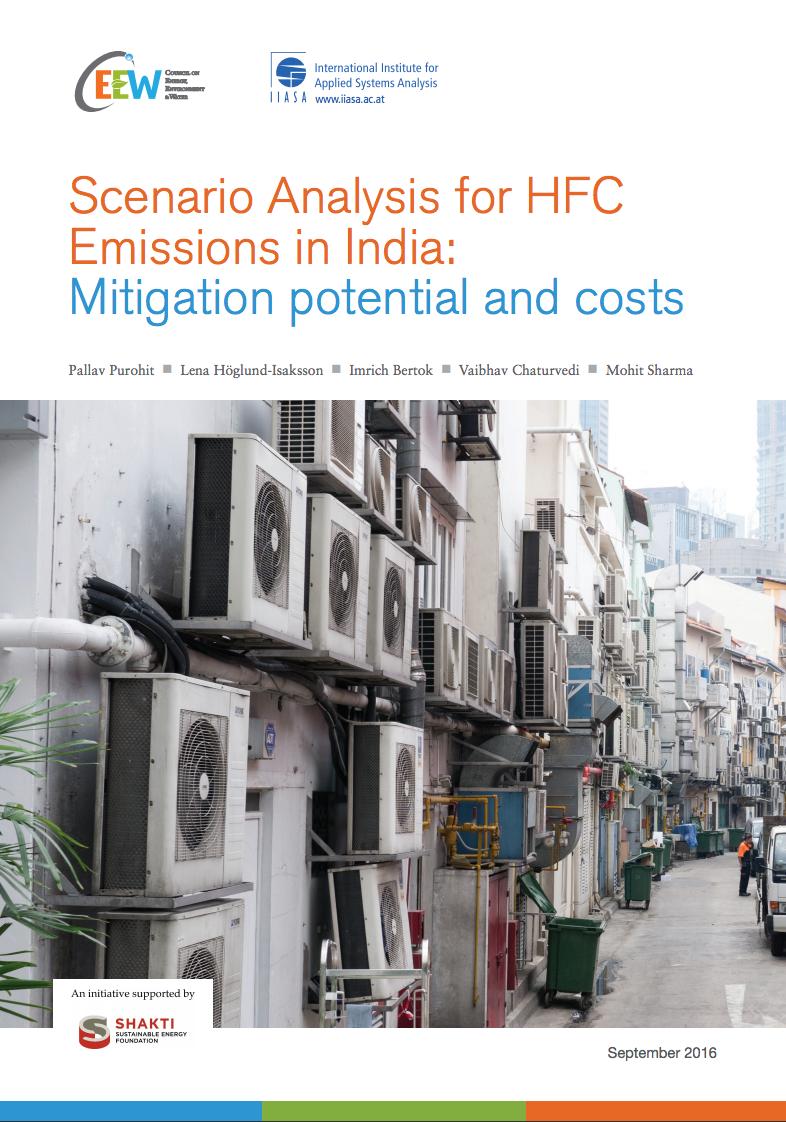Report
Scenario Analysis for HFC Emission in India
Mitigation potential and costs
Vaibhav Chaturvedi, Pallav Purohit, Lena Höglund-Isaksson, Imrich Bertok, Mohit Sharma
September 2016 | Sustainable Cooling
Suggested citation:Purohit, Pallav, Lena Höglund-Isaksson, Imrich Bertok, Vaibhav Chaturvedi, Mohit Sharma. 2016. Scenario Analysis for HFC emissions in India: Mitigation Potential and Costs. New Delhi; Laxenburg: Council on Energy, Environment and Water and International Institute for Applied Systems Analysis.
Overview
This report, in collaboration with the International Institute for Applied System Analysis (IIASA) and supported by Shakti Sustainable Energy Foundation, models scenarios to understand the implications of alternative future actions on the hydrofluorocarbon (HFC) front for Indian emissions and industry. Further, it presents the estimates for HFC emissions in India. It also provides their technical mitigation potential and associated costs between 2010 to 2050. In addition, it discusses policy implications to enable India to design measures which pursued domestic, economic and social priorities and global environmental leadership.
The phase-out of Hydrochlorofluorocarbons (HCFCs) has resulted in a transition towards HFCs, which are potent greenhouse gases with high Global Warming Potential (GWP). A significant increase in emissions of HFCs is expected as a result. However, the pace and magnitude of these emissions, as well as economy-wide mitigation cost of the potential of HFC emissions, are well not understood.
Cumulative mitigation potential, foregone cumulative emissions, and cumulative costs and saving under different HFC phase-down scenarios in the period 2015 to 2050
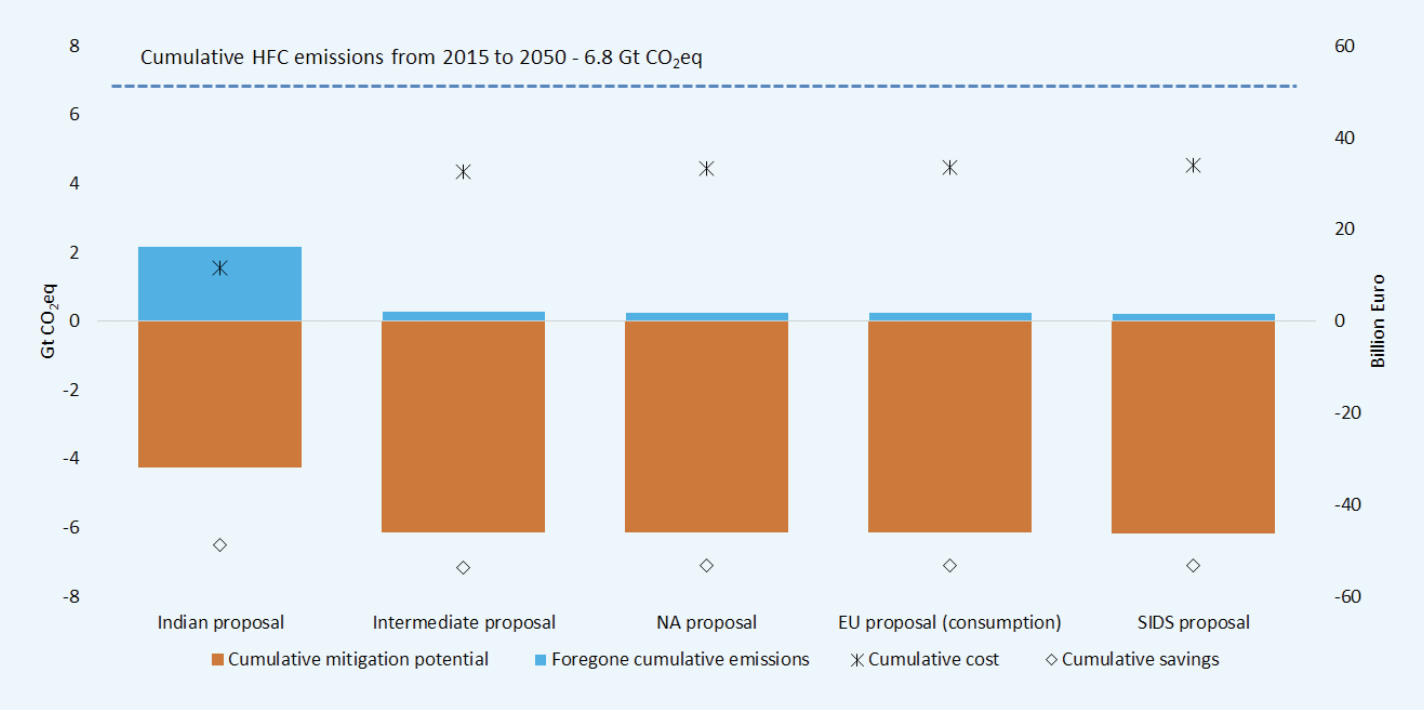
Key Highlights
- HFCs are the fastest-growing group of greenhouse gases, increasing at a rate of 10 to 15 percent per year. Indian HCFC/HFC emissions are estimated at 10 Mt CO2eq in 2010 with an expected increase to about 503 Mt CO2eq in 2050.
- There are extensive opportunities to reduce HFC emissions by up to 98 percent, primarily through replacement with existing alternative low-GWP substances.
- The growth is estimated to be caused mainly by the increase in HFC emissions from refrigeration and air-conditioning applications.
- Approximately 37 per cent of the mitigation potential was attainable at zero cost, while nearly 53 percent reduction was attainable at a cost of less than 20 €/t CO2eq.
- During the 2016 legislation or baseline scenario for India, cumulative HFC emissions were estimated at 6.8 Gt CO2eq2 in the period 2015 to 2050. The maximum technically feasible mitigation potential is estimated at 6.4 Gt CO2eq for the same period.
- Cumulative mitigation cost of the Indian proposal is nearly one-third (11.6 billion Euro) as compared to those of the global proposals (33–34 billion Euro).
- India’s active participation in the phase-down of HFCs will help to meet its current pledge to improve the emissions intensity of its GDP by 33 to 35 percent by 2030 below 2005 levels in a cost-effective manner.
- Proposals have been submitted by North America (NA), the European Union (EU), Small Island Developing States (SIDS), and India to amend the Montreal Protocol to substantially reduce growth in HFC use.
- Approximately 6.1 Gt CO2eq cumulative HFC emissions reduction is possible following the NA, EU, and SIDS proposals from 2015 to 2050.
- The reduction in cumulative emissions was 4.2 Gt CO2eq for the Indian proposal because of the later start of the controls for developing countries than in the other proposals.
Mitigation potential and cost under the Indian proposal
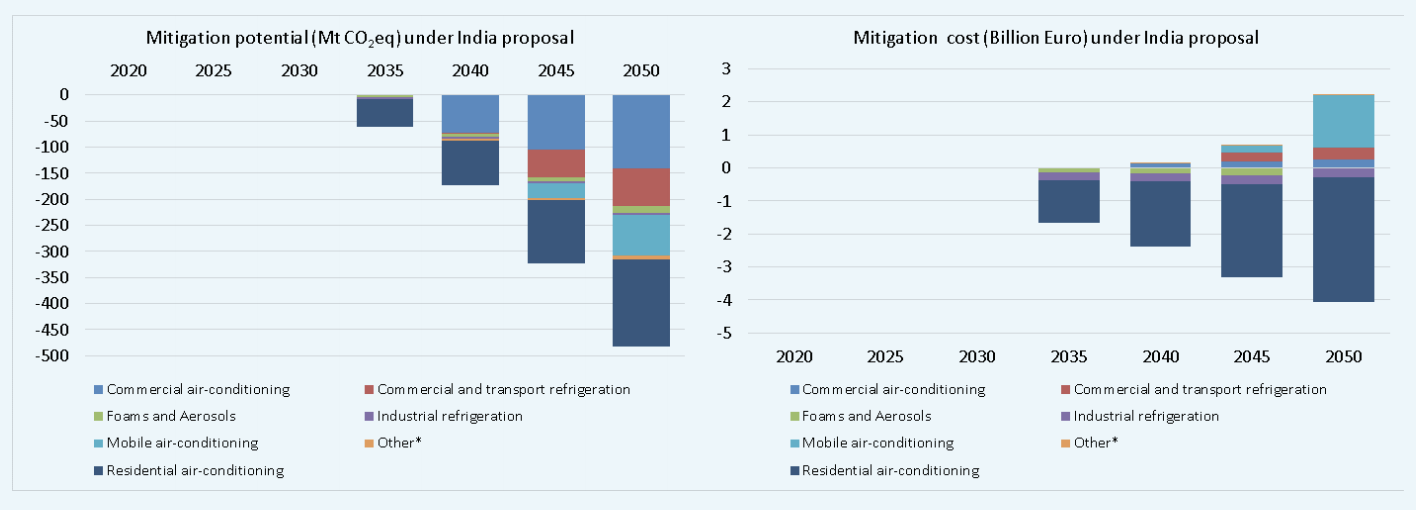
Source: Authors’ analysis
Key recommendations
- Incorporate adequate domestic policy measures to increase incentives and to adopt regulations for more energy-efficient appliances in the phase-out of HCFCs and the phase-down of HFCs.
- Promote low-GWP alternatives by developing and implementing appropriate regulations (leakage control, improved components). End-of-life recollection and sectoral bans on high-GWP refrigerants are also required.
- Create a dedicated institutional structure for supporting R&D for low-GWP alternatives for different sectors and applications, particularly HC-290 for the room air-conditioning sector.
- Develop a better understanding of the cost of HFO-1234yf, which is being offered as a technically viable solution for the mobile air-conditioning sector. Understand the extent to which this cost can decline even in the long term. This will be helpful for the Indian stakeholders.
India’s active participation in the phase-down of HFCs will help to meet its current pledge to improve the emissions intensity of its GDP by 33 to 35 percent by 2030 below 2005 levels in a cost-effective manner.






